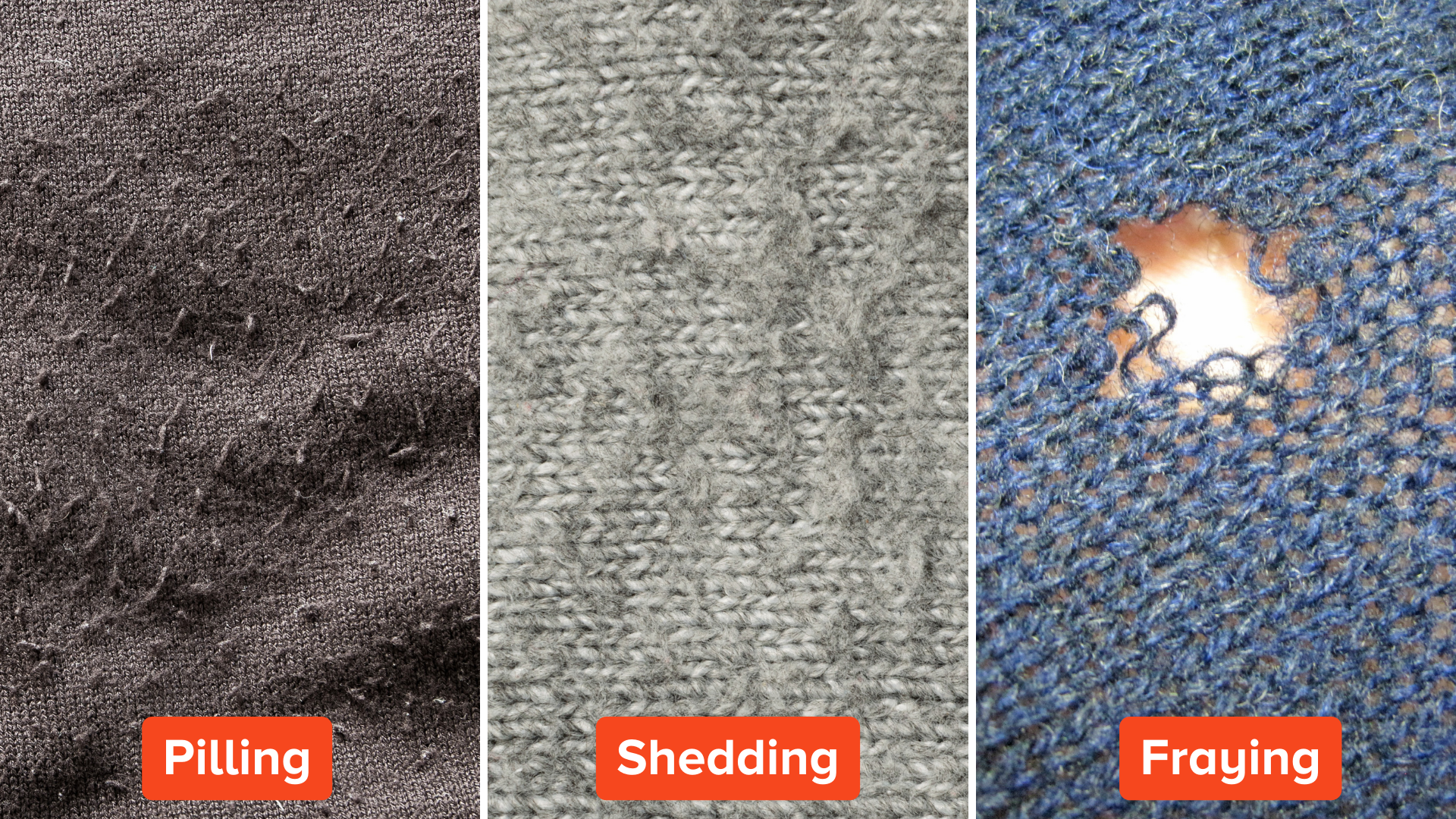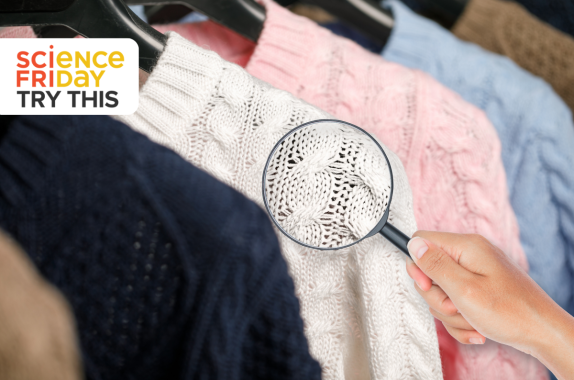Grade Level
All
minutes
15 min - 1 hr
subject
Chemistry
stem practices
Analyzing and Interpreting Data
Activity Type:
Household materials, Family activity, materials science
In the fall of 2023, cable knit sweaters had a moment. As part of a spread for Time Out New York, actor Ben Schwartz recreated a look from When Harry Met Sally…, a movie made more than thirty years earlier. He shared a photo of himself alongside a photo from the movie in which the star, Billy Crystal, wore a chunky, white cable-knit sweater. It went viral because the quality of the two sweaters was so obviously different.
Take a look below. What do you notice? How are the sweaters different?
View this post on Instagram
Note: In the image above, a social media post shows two photos, side by side, of men wearing a white cable-knit sweater, blue jeans, and white sneakers as they squat on a wooden floor in front of a window.
But this isn’t a story about fashion. This is a story about science.
The original sweater was made of all-natural fibers, specifically wool and perhaps cotton. The new one was likely made with a synthetic blend of polyester, nylon, or acrylic—essentially plastic. Many sweaters today use textiles developed by materials scientists in a laboratory, rather than grown in fields or sheared from sheep.
These high-tech fabrics are less expensive to make and can be more easily washed in a machine, so many of the clothes you find at the store these days contain at least some synthetic fibers. Unfortunately, that convenience can come at a cost. Synthetic fabrics tend to pill, shed, unravel, and deform more easily than clothes made from natural fibers. They also just look and feel different than those made from wool or cotton.
Sweater Scavenger Hunt
So, what do you have in your closet? Take a moment to grab a few clothing items from around the house. Check out the labels and look for one that lists the materials used. If you have a magnifying glass, cell phone with a camera, or microscope, try getting really close-up look at the fabric.
- What materials are your clothes made from? Did the manufacturer list the percentage for each material?
- Do you notice any similarities between clothes made of the same materials?
- Do you notice differences between clothing made from natural materials, like wool, cotton, linen, and silk versus synthetic fabrics like polyesters, nylon, acrylic, and spandex?
- Can you classify the clothes by their materials? By their characteristics?
If you have a sweater or two, you can even look for some signs of wear. Pilling is when small balls form on the surface of cloth. It usually happens when the fabric rubs against other fabric, especially in places like under your arms. In some cases, sweaters will look fuzzy as the fibers break and the sweater sheds tiny bits of fabric, leading to concerns that synthetic textiles are adding to microplastics in our oceans and soil. You may also see some fraying, unraveling, or wear at the edges, like on the ends of your sleeves or at the waistband.
If you’re the type of person who loves illustrations, try making a bar graph showing a comparison between the number of synthetic, natural, and mixed fabrics in your closet. Or collect data on the pieces of clothing that show pilling, shredding, and fraying and create a chart. We’d love to see what you discover! If you post it online, be sure to tag us with @scifri.

The Science Behind The Sweater
Natural fibers tend to be innately wavy, which causes the textiles to form air pockets that act as insulators by trapping warm air against your body. They also have components like cellulose, proteins, and lipids, which make them stronger than synthetic fibers. So they keep their shape better and last longer. In addition, natural fibers tend to absorb water from the air—they’re hygroscopic. That little bit of dampness reduces the amount of static electricity they generate.
By comparison, synthetic fibers are extruded, meaning they are pushed through the holes on a device, similar to the way water streams through a shower-head, and then stretched into straight strands. They just don’t insulate as well. Plus, they are hydrophobic, which means they repel water. As a result, synthetic fibers tend to make a lot of static electricity. You’ve probably experienced that when your clothes cling together when you take them out of the dryer. That clinginess causes the fabric to rub together, which increases problems like pilling, shedding, and fraying. And since synthetic fibers aren’t as strong as natural fibers, that damage shows up much more quickly than it does in cotton or wool.
The Science Behind Your Unraveling Sweaters
Keep Learning
The world of materials and textile science and technology is exciting and multifaceted. Learn more with these resources:
- Read the article that started the controversy about sweater quality.
- Learn more about the science behind your unraveling sweaters.
- Watch how polyester is made from recycled plastic bottles in this video.
- Try these quick, easy 4-H activities to experiment with textiles.
- Explore engineering involved with the use, selection, and properties of fabrics.
- Experiment with static electricity.
Credits
Lesson by Sandy Roberts
Copyediting by Lois Parshley
Digital Production by Sandy Roberts
Meet the Writer
About Sandy Roberts
Sandy Roberts is Science Friday’s Education Program Manager, where she creates learning resources and experiences to advance STEM equity in all learning environments. Lately, she’s been playing with origami circuits and trying to perfect a gluten-free sourdough recipe.
